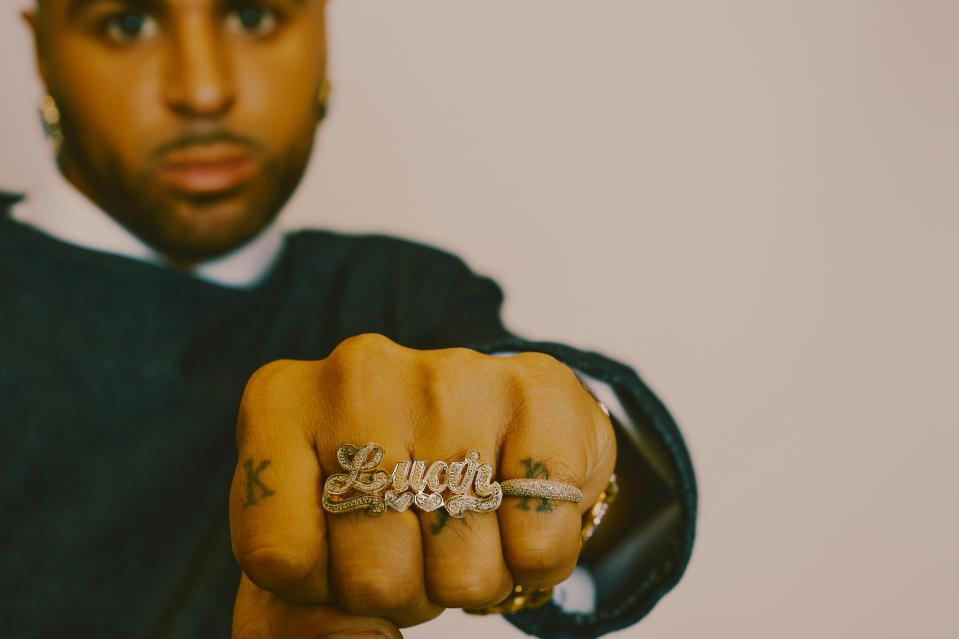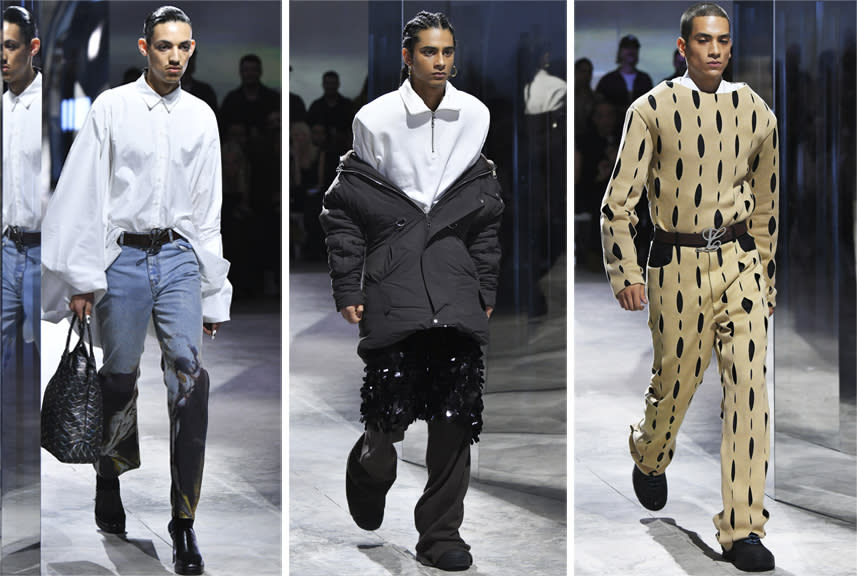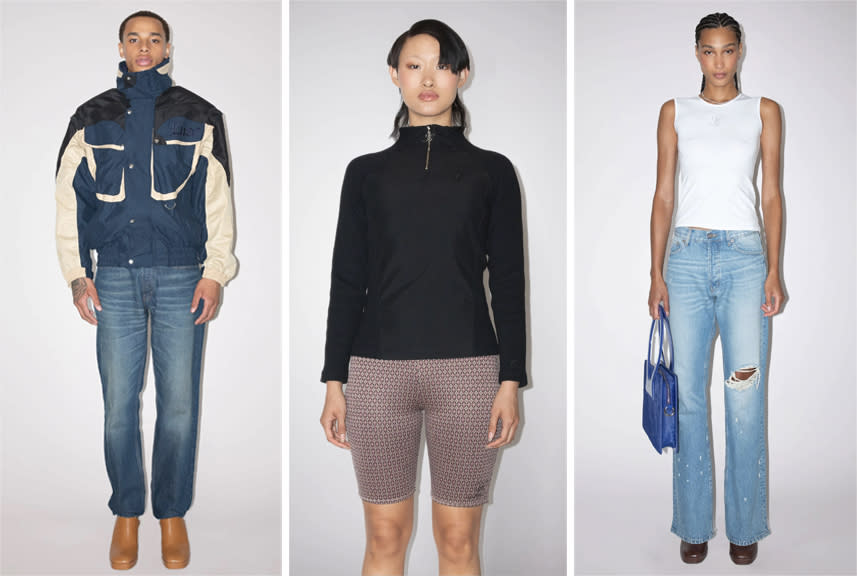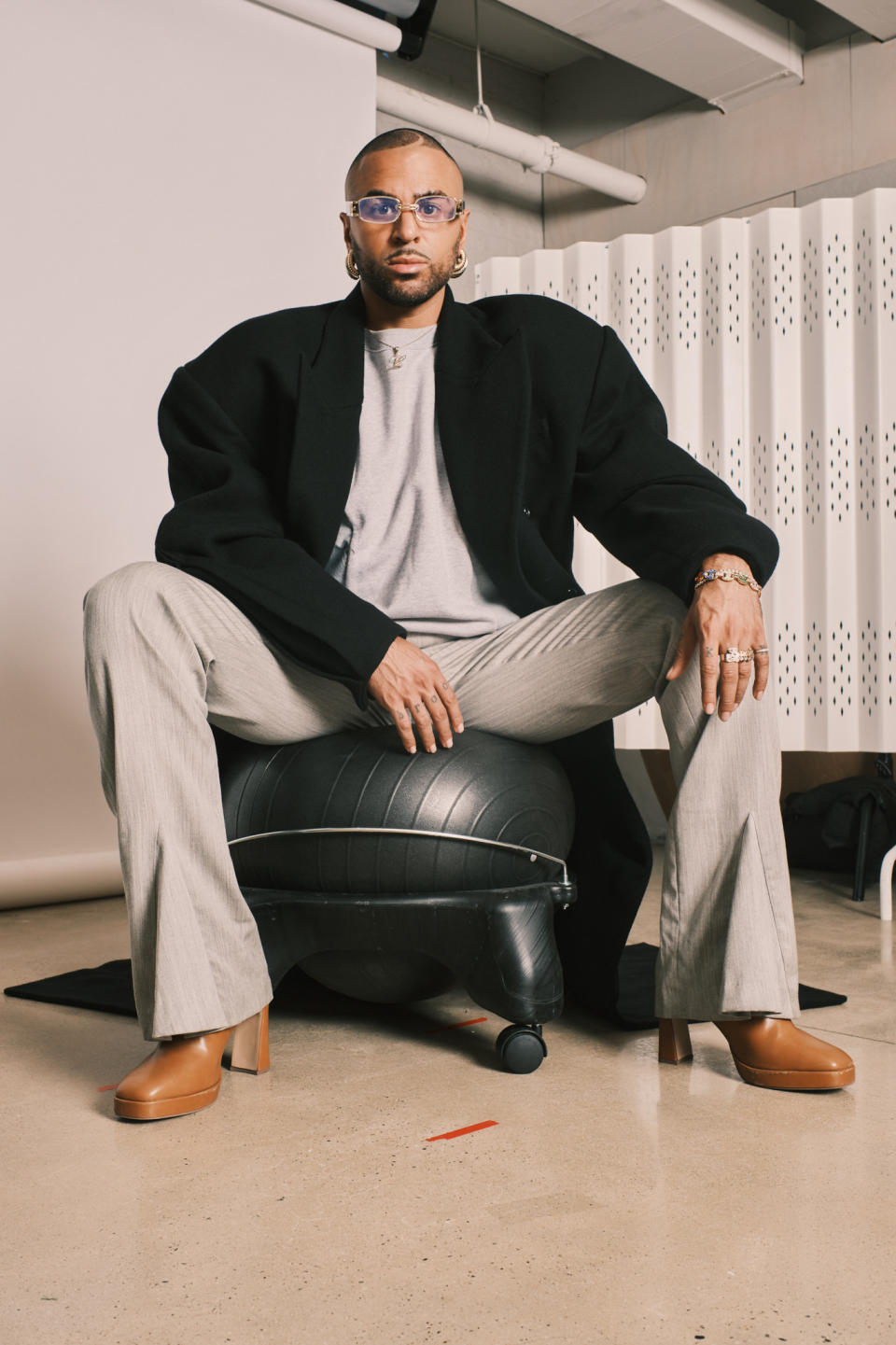Luar’s Run at Becoming This Generation’s Americana Mega Brand

Next week, Raul Lopez — the New York City-based designer behind Luar — will strap into an airplane seat bound for Paris. He’s a finalist for the LVMH Prize — the latest stop on a road to what could make him the U.S.’ new egalitarian lifestyle brand, following in the footsteps of Ralph Lauren, Calvin Klein and Tory Burch.
Lopez, like those aforementioned who came before him, has a particular knack for offering luxury at a price point that feels within grasp.
More from WWD
Ralph Lauren, the son of Jewish, eastern European immigrants and a first-generation New Yorker, took the WASP-y dress code to the masses. Lopez, also a first generation New Yorker, is following suit with his own viewpoint — one that interprets codes from wealthy, white America through the lens of working class Brooklyn and its Dominican community — making it feel particularly vital in this cultural moment.
“I want to sell. I want to be global. I want to make a world where everyone comes to Luar and it feels good. I want to grow this to a place where kids are lining up and want to hang out and buy clothes. Like AOL chat rooms — you know, everyone is in there and doesn’t know each other and becomes friends. I want it to be the YMCA of fashion — the Boys and Girls Club. So everyone has a place to come,” the designer said of his ambitions.
Last month, he launched the brand’s first commercial ready-to-wear collection, with most pieces priced under $250.
This follows the 2021 relaunch of his collection, which included the “Ana” bag, a granny purse hybridized with a Wall Streeter’s briefcase, all shrunken down to itty-bitty TikTok proportions. The style helped propel Lopez further after a decade of futile attempts at high fashion under his own name.
The Ana, which has been offered in pony hair, iridescent and embossed ostrich finishes, has sold in the “thousands,” according to Lopez. It’s been in the window of Bergdorf Goodman and, this past December, was in the clutches of dozens of partygoers at any given Art Basel Miami Beach event. It also won him the CFDA Award for Accessory Designer of the Year.

On a recent afternoon, Lopez is at his office in Industry City area of Brooklyn, New York — rummaging through a plastic Cartier backstock case that he uses to transport his personal jewelry collection around the city. “I take it with me most days,” he said. Inside are vintage Nina Ricci gold clip-on earrings, a bejeweled costume watch, and a multifinger ring that spells out Luar.
His office — a three desk-wide cubicle in the co-working space Camp David — is stuffed with garment racks and handbags, storing the entire contents of his brand archives since it returned with a more commercial bent.
Lopez rode out the pandemic in Cayman Islands, where he worked as a creative consultant for the popular resort Palm Heights. He also visited family in the Dominican Republic, where he noticed women’s attachment to Michael Kors accessories — their ballet flats with little MK charms and handbags maintained with the care of a Birkin — and decided to get more in line with that branding mentality.
“I think for me, it was trying to figure out how to align myself with these bigger brands and not seem so emerging. I have been emerging for like 10 years — so it’s about trying to get established,” Lopez said of his change in approach.
The designer is a keen observer, and his brand is an amalgamation of 35 years of looking in on every echelon of New York City society.
It’s almost as if you can feel the city through Luar’s runway collections and, now, his wider commercial designs. New York’s fashion industry has always focused on Manhattan — even though the island only accounts for 1.6 million of the city’s 8.5 million-plus population. Lopez is looking through a wider lens, offering a loudspeaker for the outer borough experience — giving more New Yorkers than not a slice of fashion that they can identify with. “It’s my twist on Americana,” he said.
In Luar’s latest drop, there are white cotton tank tops with a bejeweled “L” ($90), styled with distressed mid-rise jeans ($260) and his version of a swishy jogging pant, which flare from the center with pleats ($290). There are logo sweatshirts with a silhouette pulled from ’50s football teams ($172), half-zip technical pullovers ($158) and track jackets that resemble late ’90s ski jackets ($420).
They are stylized updates to what can be a typical New York uniform — one he is striving to preserve, particularly as the city bends to the desires of extreme affluence.
In February, Lopez closed New York Fashion Week in a slot long reserved for Marc Jacobs. The fall collection, called “Calle pero Elegante,” was a heightened version of the commercial designs that Luar recently released on its site. It was an ode to what Lopez called the New York “gangstresses” of the late ’90s, with their fur coats and diamonds illustrating a certain tension between new and old money codes.
The collection grew Luar’s business and was picked up by 25 retailers, including Bergdorf Goodman, Saks Fifth Avenue and Trame. Compared with spring 2023, the company says its wholesale revenue increased 60 percent.
Like many designers of color, Lopez feels that his margin for error is incredibly small. And so the designer, who feels in some ways tortured to present clothes crafted at a high level, spends weeks on the road overseeing production and quality control in Portugal.

Lopez is gifted, and in some ways cursed, with a deep drive to produce fashion at any cost. He has no formal design training, did not attend college, and from 2011 to 2017 produced a brand called Luar Zepol (his name spelled backward) with 30 or so full runway looks each season — down to the shoes — by surviving off unemployment checks.
That project came a year after he departed Hood by Air, which he cofounded with Shayne Oliver and left just before the brand took off. Even that did not sour Lopez’s desire to create fashion, even in the midst of relentless financial struggle. All the while he had the big personality and taste level required to make it in fashion — something money cannot buy.
Fast-forward a decade-plus and the designer is finally making some money while maintaining a similar level of resourcefulness and grit. Lopez still lives in the same rent-stabilized apartment building that he grew up in — sharing the Williamsburg, Brooklyn space with a roommate.
“I have a mission and I know what it is. I’m not interested in living lavishly — I’ve seen and been in the best places while living in that apartment,” he said.
At Camp David, it’s a similar situation. Lopez and his team work out of an elongated cubicle, dodging tech bros and a general smell of cold brew coffee. It’s not an ideal place for a creative to work, but there is a method to the madness. The fact that Luar’s neighbors have no interest in the brand means one thing — affordable rent and a minimal chance someone will steal their samples.
In Camp David’s basement, Lopez has — without approval — moved in drafting tables, a Juki industrial sewing machine while a rack of Ana bags, clothing samples and fur coats hangs in the open. “No one comes down here, we take over this space,” he said. “I have come from the trenches, I could work anywhere.” On July 1, however, he will move his team to Luar’s first official office space in Manhattan’s Financial District.
The brand employs a small team of about six full-time employees along with a roster of consultants who are part of Lopez’s wider creative community.
“I think for me [having a brand] has been a form of struggle and survival. I come from an era where I had to fight to make space for myself. It teaches you survival skills. I saw my dad build his own construction company after working at a fruit stand and a parking lot for years. He built himself from nothing,” said the designer.
Lopez’s plastic Cartier box could be taken a metaphor his work as a whole. It errs on fancy, but is grounded in aspiration and utility.
Luar is a reflection of moments ranging from family gatherings in pre-gentrification Brooklyn, after-school outings in luxury department stores, the indie sleaze downtown era when most weekends you could find Lopez beside a speaker at places like Home Sweet Home, to fashion awards and philanthropic galas.

For Lopez, that alchemy can manifest in peculiar ways. It’s why, when he stayed in a penthouse at The Carlyle Hotel for free to get ready for the Met Gala, he was obsessed with the room’s random finishes. “Look at the toilet paper holder,” he said grinning, while showing a cell phone photo of a polished chrome fixture.
In many ways, the designer is still a starry-eyed kid — a perspective that’s integral to his creative process, much of which happens late at night while tucked away in his bedroom.
When Lopez appeared on Vogue.com’s Met Gala red carpet livestream alongside model and longtime friend Paloma Elsesser, he was palpably nervous. “It was my coming out party, it was my debutante ball,” he said of the event. “All the leaders are there, like literally [former mayor Michael] Bloomberg is right next to me.”
It’s this naivety that affords Lopez the distance to blend his own visual narrative with codes from wealthy white communities.
Sitting on a couch at Camp David, Lopez pulls up the Class of Palm Beach TikTok account that chronicles the outfits women wear while shopping on Worth Avenue. He talks about the fake Hermès and Chanel handbags wealthy women wear out in the daytime, while keeping the real versions safely tucked away in their closets. He’s obsessed with the Upper East Side and the subculture of philanthropy as a rich person’s hobby.
“For me, it’s about looking at these spoon-fed families with generational money and trying to crack their code. A lot of these people are rich from selling [everyday things like] French fries and we’re out here breaking our backs like trying to recreate the wheel,” Lopez said.
“I’m trying to build this world where class, in a weird way, starts to blur out. It’s more about how you present yourself and not where you come from. I love a dinner and I love getting dressed up — so why can’t I be part of that conversation?”
Designers from marginalized communities often cannot afford to take the same risks enjoyed by those who garner financial backing or who may come from generational wealth. Lopez said he has shouldered that risk in order to pave the way for a new generation.
“I have an obsession with becoming the American designer that uses their platform to help other people. It takes someone becoming like a Ralph Lauren to be able to do that. I know that’s my duty and I have to do it. I don’t know why I’m so crazed with this whole thing of giving back. It sounds corny but I don’t even care, I just want to do it. I am a contender now, it’s a real business.”
The LVMH Prize — the winner of which will be revealed on June 7 — would bestow Lopez’s self-funded brand with a 300,000 euro prize.

“The money would be used to grow the brand and develop new resources for tailoring and production, for paying employees, and growing the brand to the place it needs to go in order to open new doors. We are really small, I think some people think we are a massive brand,” Lopez said.
And there’s a lot more he wants to do. He’s testing shoe development and is looking toward jewelry and interiors — the latter inspired by his recent jaunt at The Carlyle. “I’m such a home queen, I’m definitely doing home,” Lopez said. His first eyewear designs, resembling geriatric styling with oversize sunglasses layered atop readers, will launch in August at around $200.
Retail stores are also part of his pipe dream. When asked what a dream store would look like, Lopez didn’t wax poetic about a fancy location or architect. “I love drapes, I love drapery, I love carpets,” he said. “I’d like an oxblood carpet or a really beautiful beige or cream or camel color — wait, burnt camel — drapes. I love earth tones, I love a jewel tone.
“I think for me, I am more about slow and steady wins the race than regurgitating product and going crazy and being in a million stores. Then it’s not special anymore. I like being old school and building a family,” he said.
But regardless of his success, and the outcome of the LVMH Prize, it’s likely Lopez will keep pressing onward.
“I don’t know how to do anything else. It’s kind of like how if you slice a carrot in Japan you are the best person to ever slice a carrot and you are the carrot slicing master. I have the same model in my head. I want to master this and do it right. I really want to graduate and prove to myself because I didn’t go to school that I can do this. To prove to the world that what I wanted is what I got.”
Best of WWD


